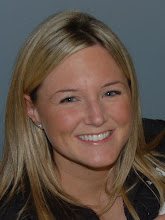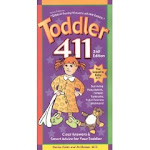This has been a long week for Caroline. She hasn't seemed like herself since Sunday - not eating or drinking well, runny nose, and generally acting kind of difficult and crabby. Even though she did okay at school at the beginning of the week, we didn't have a good start at our first class at Kidville - it's called Ballerina Tea Party, which combines Caroline's two loves: movement and a snack (what's not to love?!). She had a meltdown and we even had to step out for a few minutes - SO uncharacteristic of her. Something was just not quite right, and I knew it.
Well, things finally came to a head last night around 11:30. Caroline had been asleep for a few hours. Steve and I had already gone to bed but were still awake when we heard her gasping from her room. Steve ran in to see what was wrong - at first, he thought she was choking, and was whacking her on the back as he brought her back into our room. When I saw her, I had a strong suspicion about what was going on. She was burning up, convulsing, with her eyes rolled back in her head. Her limbs were rigid, fists clenched, and her lips were blue even though she was breathing and her heart was racing. I had a feeling that we were witnessing our first febrile seizure (which I'd thankfully read about in Your Baby's First Year, Week by Week and Toddler 411), but as Caroline's never had anything like this before, we were obviously really scared.
We immediately rolled Caroline on her side and called 911 to have an ambulance sent to our house. After about three minutes, the episode ended, and Caroline seemed incredibly lethargic and limp, but she was breathing and her heart began to slow down. The paramedics arrived quickly - I've never been so glad to see 8 guys bust into my room in the middle of the night while in my ratty pajamas and messed up hair. When we told them what had happened, they agreed that it probably was indeed a febrile seizure - a benign seizure brought on by sudden extreme changes in body temperature (fever). Caroline had gone to bed only 3 1/2 hours earlier with no signs of a fever, and within that time had elevated to at least 103.2 (they think it probably went even higher, but because she was given Tylenol very quickly, it probably came down a bit before they took that temp).
We went in to one of our local hospitals' pediatric ERs, where she was assessed and monitored. They first tried to get the fever under control (since that's what was causing the seizures), and then attempted to identify the cause of it. As my mom likes to say, "First, put out the fire. Then, determine how it happened." They checked her ears, belly, and throat for infection. When nothing remarkable was found, the decision was made to monitor for a bit to see if the Tylenol continued to work. Caroline, meanwhile, was fast asleep on Steve's chest. After a seizure (even a short one like this), kids are exhausted and really disoriented.
Since I hadn't ridden with her in the ambulance, I didn't get to go back into the room with her until a few minutes after her arrival at the hospital. The drive there and the waiting was the hardest - every second felt like a million years. I had the chance to call our pediatrician on call, who was really helpful and supportive. He told me that we had done everything right, and that I was doing a good job of remaining calm, which I appreciated even though the latter was all just smoke and mirrors. My mom and dad luckily met us at the hospital too - my mom's a burn and trauma nurse so it's always comforting to have her around during times like this.
The hospital concurred with everyone else's suspicions that this was a febrile seizure, and helped us to understand what happened and how to try to keep it from happening again. The current working theory is that children under 6 have under-developed myelin, which is the coating of the nerves in their brains. This lack of myelin creates an environment where "short circuits" can happen during times when the body has a rapid rise in temperature, which is when the seizure occurs. As kids get older, the risk of febrile seizures all but disappears, but it is very common in youngsters under 6 or so. Our ER doctor told us that our county alone sees about 20,000 cases of this per year.
While what we experienced is probably the most frightening thing we've ever seen, we have taken comfort in several facts that our doctors have shared with us. First of all (and most comforting), the fact that Caroline has had a febrile seizure doesn't make her more predisposed to developing a seizure disorder such as epilepsy, nor will it cause any sort of brain damage. It does, however, make it more likely that she'll have another febrile seizure when she's sick, which is why we need to be vigilant and proactive if she seems to be coming down with something that could lead to fever (such as giving her Tylenol or Motrin before bed if we suspect she might be heading in that direction). Febrile seizures may have a family link, so if one child or parent in the family has a history of them, the other children are at increased risk of suffering from one - that was a really important piece of information that we received.
The doctors also reassured us that we handled the situation correctly by turning her on her side and contacting 911 for support. They also helped us understand that most often, these types of seizures occur with a common virus, although occasionally they can also be a sign of something more serious, such as meningitis (which they would check for if the fever wasn't coming down after treatment, along with no other obvious signs of infection). Another interesting lesson was that we wouldn't necessarily have to bring Caroline right back in if she had another one - just if she had one within 24 hours. The fact that she is now predisposed to these episodes means that we may learn to manage them at home if they happen again during subsequent illnesses - while being in immediate communication with our primary care physician, of course. If it's obvious that she's spikes a random fever with no other real symptoms and one occurs, a febrile seizure is most likely what's going on. When in doubt about them, however, the best thing to do is to get her in to an ER.
Finally, we learned that she could and should take Tylenol and Motrin concurrently when she has a high fever such as this - they don't interact with one another, and it increases our chances of staying on top of her fever before it has a chance to get too out of control. Obviously, you should consult your own pediatrician about this kind of stuff, but I wanted to put it out there as a potential talking point if you ever need it - I never knew that one before.
Caroline had perked up by the time we were getting ready to leave, even eating a popscicle from the nurse and asking my mom and dad where their dog Oscar was (we thought that was cute - and a very good sign!). After we were discharged around 2:30, we headed home, with a quick detour to CVS for supplies and a stop in a parking lot because Caroline threw up everywhere. I've never been so glad to see barf in my life - it meant that we were dealing with some common virus rather than a more serious infection that was lurking in the background and would have us making a u-turn back to the ER in a matter of hours. We all crashed around 3:30 - with Caroline on her crib mattress on our floor. Steve and I both agreed we didn't mind a little extra company (tonight, for that matter, either - neither of us seem to want to let her out of our sight, which takes me back to the early days!).
Today Caroline missed school and the day was spent was spent laying low, reading books, watching Noggin (whose slogan is "It's like preschool, on t.v." - or so I told myself for the 7+ hours it was on!) and trying to drink fluids. Caroline's favorites so far have been apple juice, "red" popscicles, and a bit of Jell-O. She's been up and down all day, both in temperature and demeanor. You can really tell when the fever is setting in again - she goes from acting relatively normal to literally lying on the floor and falling asleep. We're doing our best to stay on top of it - alternating Motrin and Tylenol every three hours. I also followed up with Caroline's pediatricians to keep them in the loop. We're all tired and looking forward to a good night's rest, with the exception of waking up for meds, we all hope.
Anyways, I know this was a long one, but I wanted to share with everyone because even though I had read of febrile seizures before, when you are in the throes of it (especially if it's your child's first), it's easy to panic. The most important things we learned to remember are to put your child on a flat surface on his or her side, with nothing obstructing their airway (do a finger sweep to move the tongue out of the way if they are gasping and can't seem to get air), and to call 911 or your physician immediately. If you remember nothing else in the situation, file those two steps away in your head. The American Academy of Pediatrics also has a great FAQ sheet that shares more details about what to do when a febrile seizure happens, and how they will be treated by your doctor. I'm keeping my fingers crossed that we have a quiet night tonight, and hope that you can file our story away in your head so that if this ever happens to you, you won't feel as scared since you've heard of someone else experiencing this. Goodnight, sleep tight - I'm off to give a dose of Infant Tylenol and heading to bed for a few hours!


































